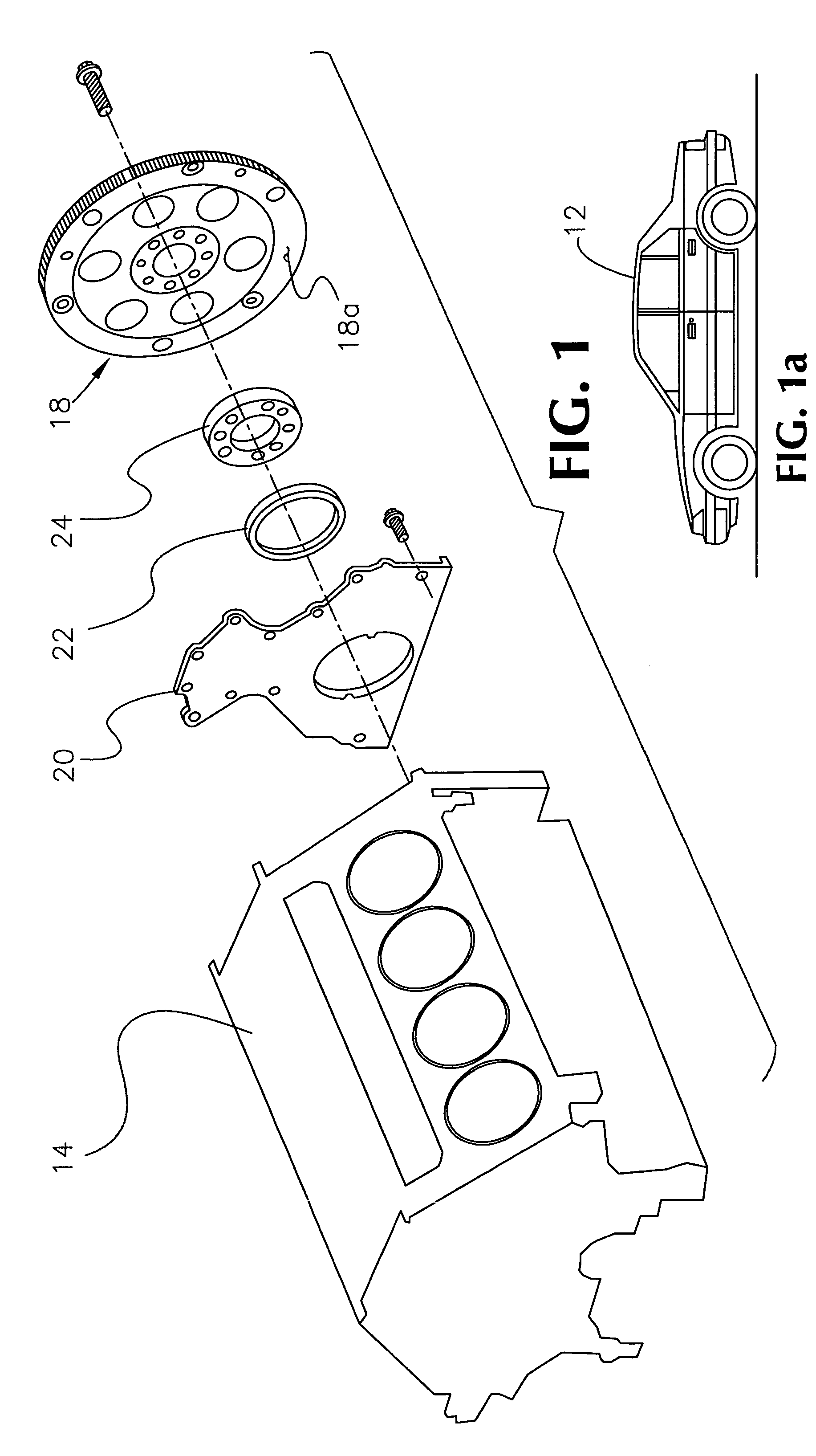Method and apparatus for engine torque sensing
a technology of engine torque and torque measurement, applied in the direction of apparatus for force/torque/work measurement, instruments, tension measurement, etc., can solve the problems of limiting the accuracy and reliability of these estimation modules, affecting the control strategies of high-performance engines and transmissions currently prevalent in automotive vehicles, and conventional engine torque estimation methods insufficient to achieve the stated goals of new powertrain control strategies. , the effect of reducing packaging concerns
- Summary
- Abstract
- Description
- Claims
- Application Information
AI Technical Summary
Benefits of technology
Problems solved by technology
Method used
Image
Examples
Embodiment Construction
)
[0030]The present invention concerns an improved direct engine torque sensory system 10 adapted for use by a vehicle 12 having an engine 14, a crankshaft 16 connected to the engine 14, and a flexplate 18 fixedly attached to the crankshaft 16. As is typical, the crankshaft 16 and engine 14 are cooperatively configured to convert the linear displacement of engine components (not shown) into the rotational displacement of the crankshaft 16 and flexplate 18. In FIG. 1, an exemplary conventional engine / flexplate assembly is shown, wherein the flexplate 18 is connected by a flexplate bolt to the rear of the engine block 14, and preceded sequentially by a crankshaft rear oil seal housing 20, a crankshaft rear oil seal 22, and a flexplate spacer 24.
[0031]The preferred flexplate 18 presents a disk with gearteeth on the rim, as is illustrated and conventionally used in the art (see, FIGS. 2 through 3b). For example, a suitable flexplate 18 having 168 teeth, and a 35.6 cm (14-inches) outside ...
PUM
 Login to View More
Login to View More Abstract
Description
Claims
Application Information
 Login to View More
Login to View More - R&D
- Intellectual Property
- Life Sciences
- Materials
- Tech Scout
- Unparalleled Data Quality
- Higher Quality Content
- 60% Fewer Hallucinations
Browse by: Latest US Patents, China's latest patents, Technical Efficacy Thesaurus, Application Domain, Technology Topic, Popular Technical Reports.
© 2025 PatSnap. All rights reserved.Legal|Privacy policy|Modern Slavery Act Transparency Statement|Sitemap|About US| Contact US: help@patsnap.com



